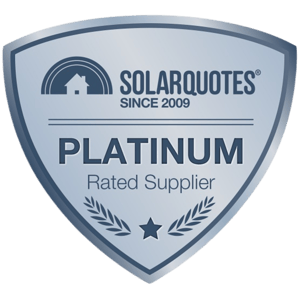Urgent Call for Rapid Shutdown: Is Australia Behind in Solar Safety?

Solar Energy's rapid growth in popularity across Australia is not new news, as solar energy offers the nation sustainable and cost-effective alternative to traditional energy sources. However, as more households and businesses adopt solar power, the importance of ensuring fire safety measures are applied to installations cannot be overstated.
Most recently an incident at the Sydney Olympic Park Aquatic Centre has underscored the potential risks associated with solar systems and this has further highlighted the need for robust safety measures, such as rapid shutdown capabilities to be implemented across the land.
Let’s dive deeper into the importance and critical aspects of fire safety in solar and battery installations .

Fire Safety Risks in High-Voltage Solar Installations.
Captain Richard Bert (from Las Vegas, Nevada), is a dedicated firefighter with extensive experience in fire safety, he has conducted thorough research on the dangers associated with solar energy systems and he has shared his findings with Smart Energy Answers to ensure that as providers, we are also protecting our customers and that our Smart Solar and Battery solutions prevent solar fires. Captain Birt's research emphasises the inherent risks of high-voltage electricity in solar installations and the unique challenges faced by firefighters during such incidents.
High-voltage solar systems can pose significant fire risks, especially when the electricity cannot be quickly shut down. Quite often traditional firefighting methods are inadequate for solar-related fires due to the continuous generation of electricity if exposed to sunlight unless there is a Rapid Shutdown System in place. Real-world examples, such as the Amazon solar roof fire in 2020, illustrates the difficulties in managing these fires and the critical need for rapid shutdown systems.
High-voltage solar installations, can operate at voltages up to 1500 volts, which presents severe risks. In the event of a fire, shutting down a high-voltage inverter is challenging because solar panels continue to generate electricity as long as they are exposed to sunlight. This creates dangerous situations where firefighters must wait for panels to de-energise which can also mean waiting for nightfall to safely address the fire, as seen in the Amazon solar roof fire incident.
Continuous power generation from solar panels during daylight hours increases the risk of electric shock and complicates firefighting efforts. The limited ability to quickly and safely shut down the system delays effective fire suppression, making the situation even more hazardous.

So why do we need Rapid Shutdown and Module Level Power Electronics (MLPE)?
Rapid shutdown systems are essential for enhancing the safety of solar installations. These systems allow each module (solar panel) to be independently controlled and quickly shut down during installation, maintenance, or, in the event of a fire, drastically reducing the risk of electric shock and enabling firefighters to safely address the fire. By adopting global standards for rapid shutdown, the safety of solar installations in Australia can be significantly improved.
Module Level Power Electronics (MLPE), such as SolarEdge Power Optimisers (and Enphase Microinverters), play a crucial role in this process. SolarEdge Power Optimisers automatically shut down the DC voltage in the PV wires, protecting installers, maintenance personnel, and firefighters. Enphase Microinverters convert DC to AC at each solar panel, eliminating high-voltage DC lines and providing rapid shutdown capabilities by isolating each module.
The four key safety effects of the rapid shutdown are:
- Fire Safety
- Civilian Safety
- Incident Stabilisation
- Property Conservation
Calls for Improved Solar Safety After Sydney Olympic Park Fire!
On May 13, 2024, a fire broke out at the Sydney Olympic Park Aquatic Centre, affecting its rooftop solar system. The fire prompted immediate evacuation, ensuring the safety of all attendees. However, yet again the incident highlighted the need for effective fire safety measures in large-scale solar installations. The investigation revealed that the lack of rapid shutdown capabilities delayed the response which could have been mitigated if SolarEdge Power Optimisers or Enphase Microinverters were in place. Therefore the identified safety gaps outlined above underscored the need for mandatory safety measures, including rapid shutdown systems to be mandatory, to prevent similar incidents in the future.

(photo credits: Fire and Rescue NSW)
The Need for Mandating Rapid Shutdown in Australia!
Rapid shutdown systems are already required or regulated in countries such as the United States, Canada, the U.K., Poland, Thailand, and others, but they are not yet mandatory in Australia. However, the benefits of implementing these systems are clear. Rapid shutdown systems enhance safety for firefighters and occupants, allowing for quicker and more effective fire suppression thus they protect human lives, reduce the risk of asset damage and electric shock. When Australia is compared with international safety standards, with countries like the United States who have implemented strict regulations that require rapid shutdown systems in solar installations the safety difference is night and day. By adopting similar standards in Australia it would align us with global best practices and this will improve overall safety.
Why Choosing the Right Provider Matters?
Solar and Battery system providers also shoulder a significant responsibility for fire safety. This encompasses everything from first-class installation with high-quality, compatible materials to ensuring compliance with regulations and educating customers on self-protection which holistically ensures end-to-end best practises are in place for owners and occupants of the premises. When choosing a provider, prioritise those who demonstrate a rigorous commitment to safety throughout the entire process, from installation to after-sales service.
At Smart Energy Answers, we are strong advocates for mandatory rapid shutdown systems in become the standard in Australia, this will further enhance safety within Solar and Battery investments of our customers.
Conclusion
The importance of rapid shutdown systems in solar installations cannot be overstated. The recent fire at Sydney Olympic Park serves as a stark reminder of the potential risks and the need for robust safety measures. Mandating rapid shutdown systems in Australia is essential to protect lives and properties. Therefore it is advised that homeowners and businesses alike should prioritise fire safety when installing solar systems, likewise they should consider retrofitting existing installations with rapid shutdown capabilities. And whilst Rapid Shutdown in Australia is currently not mandatory, by choosing a Rapid Shutdown Solar system for your premise today, you will ensure that you have picked the most safest solar system to harvest green solar energy from your rooftop and you can rest assure that this system will not only nullify your bills but it will best protect you and your assets against any unforeseen events that have been outlined in this article.
To find out more about Rapid Shutdown Solar , book a consultation with one of our expert Energy Solutions Consultants today, and they will guide you through your search for a safe and Smart Home Upgrade.

%20(1).png?width=265&height=96&name=www.smartenergyanswers.com.auhs-fshubfsSmart%20Energy%20Answers%20Logo%20(HIRES)%20(1).png)

.png?width=514&height=121&name=Tesla%20Powerwall%203%20(new).png)








.webp?width=300&height=180&name=sigenergy-gold-installer-300x180%20(1).webp)